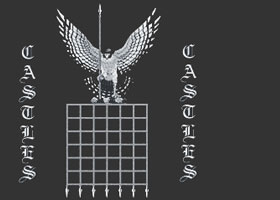Medieval Feudal SystemMedieval Feudal System - The Medieval Feudal System
- Life was dictated by a Pyramid of Power
- People could move up the Feudal system if they worked hard enough - within limitations
- The Medieval Feudal system required strict allegiance to the immediate superior
The Pyramid of Power - the Medieval Feudal System
The pyramid of power which was the Feudal system ran to a strict 'pecking order. The order which the Medieval Feudal System was a s follows: The Pope
The King
Nobles
Knights ( Squires & Pages could move up the ranks)
Archbishop ( Bishop & Clerics could move up the ranks)
Freemen
Yeomen
Servants
Peasants
Villeins
Bondsmen
Slaves It was possible to move up the ranks within the Feudal system and this is what everyone aspired to do. A Medieval Lord would employ many hundreds of people to support the Feudal System which operated in many Medieval Castles - the number of people would be proportional to the rank of a Lord. A Duke, for instance, would employ about 250 men at arms including Knights, Squires and Pages. A similar number of servants and staff would be required to run the castle and the Lord's lands. The Medieval Feudal System - Who ruled the King?
The King was clearly at the top of the Feudal system - the pyramid of power and was expected to adhere and rule according to the principles of Right and Justice. But what if the King was unjust? The Pope, as God's vicar on Earth had the right to intervene with a wicked or unjust King. The Pope had the power to pronounce judgement against a King, depose a King, forfeit his Kingdom and put another King in his place! The power and pronouncements of the Pope played a major part in the History of England. The Pope declared the Norman Invasion as a Holy Crusade and declared his support of William the Conqueror. The Battle of Hastings of 1066 was lost and the Anglo Saxon English were subsequently ruled by the Normans. Centuries later King Henry VIII clashed with the Pope and subsequently broke with the Catholic church of Rome. This led to the establishment of the Church of England and the Dissolution of the Monasteries. It was the final 'nail in the coffin' of the Medieval Feudal System in England. Medieval Feudal System
The Medieval Feudal system worked well for many hundreds of years. The decline of the Feudal System came when rich nobles were allowed to pay for soldiers rather than to fight themselves. Life changed and Mercenaries were hired from all over Europe. The Mercenaries had few allegiances, except to money, and these paid fighting men were feared throughout Europe. The threat of the Mercenaries led on to the employment of professional, trained soldiers - the Standing Armies and the end of the Medieval Feudal System in England. | 
